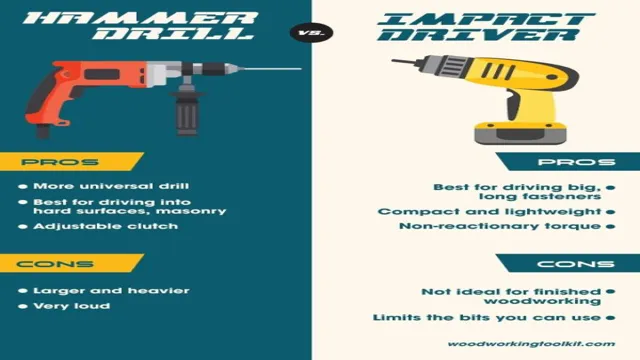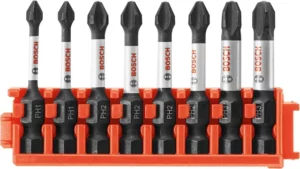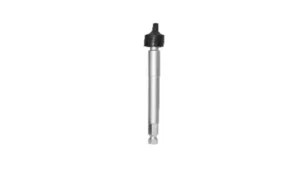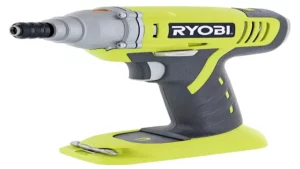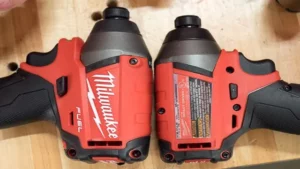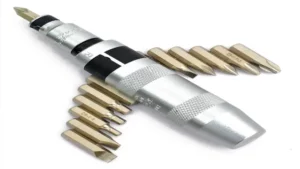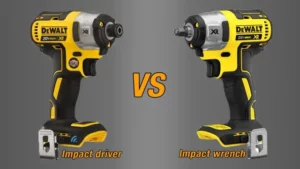Have you ever tackled a DIY project only to realize you don’t have the right tools? It can be frustrating to put in all that effort only to have to make another trip to the hardware store. That’s why having a drill and impact driver is essential for any homeowner or DIY enthusiast. These tools have become a staple for any DIY project, from hanging shelves to building furniture.
But why are they so important? Firstly, a drill is necessary for making holes, whether it’s for hanging a picture or putting together a piece of furniture. It saves time and effort compared to using a screwdriver or hammer and nail. The power of a drill ensures clean holes that won’t split the wood or cause damage to walls.
Secondly, an impact driver is indispensable when it comes to screwing things in tightly. With its high torque and multiple settings, it’s perfect for any job that requires strong, secure fastening. The impact driver can handle large screws and bolts that a regular drill may struggle with, making it a useful tool for carpentry and metalworking.
Both tools are versatile and can be used interchangeably. They come in corded or cordless options, making them easy to use and take on-the-go. Adding a drill and impact driver to your tool collection is the first step to tackling any DIY project with ease.
Whether you’re a seasoned pro or just starting, having these essential tools will save you time and ensure a successful outcome.
What is a Drill and Impact Driver?
Do you need a drill and impact driver for your DIY projects? Well, it depends on the type of project you are working on. A drill is a versatile tool that is used to drill holes and drive screws into different materials. If you are working on a project that involves drilling holes or fastening screws into wood, metal, or plastic, then a drill will be your go-to tool.
On the other hand, an impact driver is designed to provide more torque than a drill and is ideal for driving long screws into dense materials, such as hardwood or concrete. If you are working on heavier projects, such as building a deck or a large piece of furniture, an impact driver will come in handy. However, if you are just starting out with DIY projects, a drill is a must-have tool that will serve you well for a wide range of tasks.
Drill
When it comes to DIY projects or even simpler tasks around the house, having the right tools can make a big difference. Two common tools in the average homeowner’s toolkit are the drill and impact driver, but what exactly are they and how are they different? Well, a drill is a tool used to make round holes or drive screws into various materials, such as wood or metal. It typically has a chuck that holds drill bits or screwdriver bits, which can be changed out for different sizes or types of bits.
On the other hand, an impact driver is similar to a drill in that it can also drive screws, but it uses a rotational force combined with sudden bursts of concussive force to power through tougher materials without slipping or stripping the screws. It’s especially useful for applications where a lot of force is needed, such as building decks or installing cabinets. So, while a drill is a versatile tool that can handle a variety of tasks, an impact driver is a bit more specialized and excels at tougher jobs.
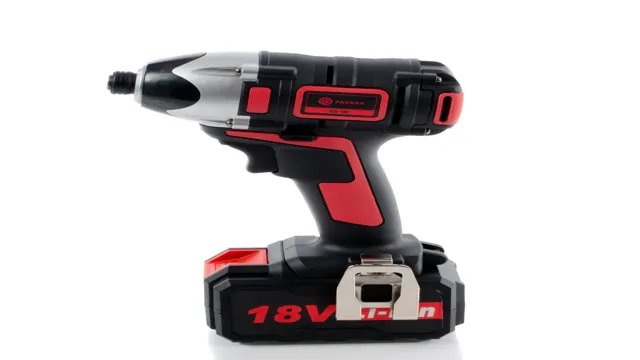
Impact Driver
An impact driver is a power tool used for driving screws and bolts with more precision and force than a drill. Although both drills and impact drivers look similar, they function differently. A drill rotates and applies a consistent force, while an impact driver uses rotational force and concussive blows to drive screws.
This allows the tool to exert extra pressure that enables the screws to be driven more effectively, even in dense materials like hardwood. Additionally, impact drivers are known for their speed and efficiency, making them a staple tool in many construction projects. So if you’re looking to take on a home improvement project or need a reliable tool for work, an impact driver is a wise investment.
It’s essential to note that impact drivers are also versatile tools that can be used for various tasks. So, whether you’re a DIY enthusiast or a professional contractor, an impact driver can significantly improve your work output and efficiency, making tasks much more comfortable and enjoyable.
Benefits of Using Both Tools
If you are a DIY enthusiast or a professional handyman, you may wonder whether you really need a drill and impact driver in your toolbox. The answer is that while both tools have some overlap in their functionality, they each have unique features that make them valuable for different tasks. A drill is great for drilling holes and screwing in screws, while an impact driver delivers high levels of torque and is better suited for tasks like driving in long screws or lag bolts.
Using both tools together can provide a more efficient and effective way to tackle a range of projects. For example, by using a drill to make a pilot hole and then an impact driver to drive in the screw, you can work faster and with less effort than if you were using just one tool. So, if you want to be a versatile and efficient handyman, having both a drill and impact driver in your toolbox is definitely worth considering.
Drill Benefits
If you’re looking to take on a DIY project or even just do some occasional household repairs, having a drill and impact driver can be a game-changer. Both tools have their unique strengths and can be used in conjunction with each other to make tasks easier and more efficient. The drill is perfect for making pilot holes, drilling into wood or drywall, and driving screws with precision, while the impact driver is ideal for heavy-duty jobs like assembling furniture, driving long screws, and working with hard materials.
Using both tools together, you can save time and effort, and complete projects to a higher standard. For example, you can use the drill to make pilot holes and then switch to the impact driver to drive in the screws quickly and easily. This not only speeds up the process but also reduces the risk of damaging the workpiece or stripping the screws.
By using both tools, you can take on a wider range of projects and feel confident in your abilities.
Impact Driver Benefits
When it comes to DIY projects, having the right power tool can make all the difference. Both impact drivers and drills are essential tools to have in your toolbox, and each has its own unique benefits. While drills are versatile and can handle a wide range of tasks, impact drivers excel at driving screws and other fasteners with ease.
By using both tools, you can enjoy the benefits of both. Impact drivers are designed to deliver high torque and quick bursts of power that are perfect for tasks like screwing in lag bolts or building a deck. Drills, on the other hand, are great for drilling into wood or metal and can be used with a variety of drill bits to tackle different jobs.
By using both tools together, you can enjoy the best of both worlds and tackle any DIY project that comes your way. So, whether you’re a seasoned DIY enthusiast or just getting started, invest in both an impact driver and a drill to make your projects faster and easier than ever before.
Combining Both Tools for Efficiency
When it comes to optimizing project management and workflow, using both Kanban boards and Gantt charts can be incredibly beneficial. Utilizing Kanban boards provides a visual representation of workflow and promotes collaboration and transparency, while Gantt charts offer an organized timeline of tasks and milestones. Combining both tools can offer the best of both worlds, allowing for easy timeline management and visual project tracking.
Plus, being able to see the big picture of a project while also focusing on the details helps to increase efficiency and productivity. So, whether you’re working on a small project or a large-scale operation, using both Kanban boards and Gantt charts can help you work smarter, not harder.
When to Use a Drill vs Impact Driver
Do you need both a drill and an impact driver? The answer is, it depends on the task at hand. While both tools are designed for drilling and screwing, they have specific purposes. A drill is better suited for making holes and drilling through materials such as wood, plastic, and metal.
It is also ideal for driving screws into softer materials. On the other hand, an impact driver provides more torque and is better suited for heavy-duty driving tasks, such as tightening or loosening bolts and screws. Impact drivers can also handle longer screws with ease, making them ideal for construction tasks.
When choosing which tool to use, consider the type of material you are working with and the task you need to complete. Ultimately, owning both a drill and impact driver can be beneficial, as they complement each other and provide versatility in your DIY projects.
Drill Uses
When it comes to using a drill or an impact driver, the decision ultimately depends on the task at hand. If you’re looking to make quick work of screwing in long bolts or driving screws into dense materials, the impact driver is your tool of choice. This powerful tool produces high rotational force, or torque, making it the ideal choice for tough jobs.
However, when it comes to drilling holes into wood or metal, or driving short screws into softer materials, the drill is the way to go. With its focused power and variable speed control, you can carefully work your way through any project. In the end, it’s all about choosing the right tool for the job to get the best results.
So, whether you’re a DIY enthusiast or a professional contractor, make an informed decision based on your project needs for optimal efficiency and performance.
Impact Driver Uses
When it comes to home DIY projects, knowing when to use a drill vs an impact driver can make all the difference in the quality of your work. Drills are great for tasks that require creating pilot holes or screwing in small to medium-sized screws. Impact drivers, on the other hand, are perfect for more heavy-duty projects that involve driving in long, large or stubborn screws.
A drill’s rotational force means that you can easily create neat, tidy holes with a relatively smaller bit. However, when it comes to driving screws with a drill, it may struggle with larger or tougher materials such as hardwood or concrete, where it may not have the necessary strength to drive the screws in all the way. This is where an impact driver shines.
With a striking force that allows for quick driving of even the most stubborn screws, the impact driver is the go-to tool for big projects like building a deck. Its quick bursts of power combined with its specialized driver bits make it ideal for tasks such as framing, deck building, and construction work. To sum it up, drills are perfect for smaller scale DIY projects such as hanging shelves or putting together furniture, while impact drivers are best suited for larger, more heavy-duty projects like building a deck or installing a subfloor.
By having both tools in your arsenal, you’ll be fully equipped to tackle any DIY project that comes your way.
Conclusion
In conclusion, the question of whether or not you need both a drill and an impact driver can be answered with a pragmatic yet sassy response: It all depends on your level of DIY badassery. If you’re just dabbling in home improvement and need a tool for occasional drilling, a drill will suffice. But if you’re serious about tackling projects like a pro, the impact driver is the Mick Jagger to your Rolling Stones.
With its powerful torque and driving capabilities, it can handle tougher jobs with ease. So, to sum it up, if you want to be the rockstar of your DIY world, you definitely need both a drill and an impact driver in your tool kit. Let’s get drilling and driving, baby!”
FAQs
How do I know if I need a drill or impact driver?
If you’re working with wood, a drill is more suitable. However, if you’re working with metal or masonry, an impact driver is recommended.
Can I use an impact driver for drilling holes?
Yes, but it’s not always the best option as impact drivers are designed for driving screws and bolts. A drill is more efficient for drilling holes.
What size drill or impact driver do I need for my project?
It depends on the size of the screws or bolts you’re using. Generally, a 3/8-inch drill and 1/4-inch impact driver should be sufficient for most household projects.
Do I need a cordless or corded drill and impact driver?
It depends on your preference and the type of project you’re working on. Cordless drills and impact drivers are more portable, but corded ones are generally more powerful.
How do I maintain my drill and impact driver?
Keep them clean and dry, store them in a cool and dry place, and regularly check and replace any worn-out parts or bits.
Can I use a drill or impact driver for automotive repairs?
Yes, but make sure you choose the right size and type of drill Bit or Impact bit for the job.
What safety precautions should I take when using a drill or impact driver?
Always wear eye protection, gloves, and a mask if working with wood or dust-generating materials. Also, make sure to secure your work with clamps or a vise and follow the manufacturer’s instructions carefully.
